Easkey Britton is no stranger to constricting surfwear. The 33-year-old big-wave surfer, scientist and activist from Ireland is accustomed to paddling out in 45-degree lineups wearing thick rubber from head to toe.
But when Britton traveled to Chabahar, a remote city in Iran, on an off-the-beaten-path surf trip back in 2010, she found the area’s required surf garb even more onerous than what she was used to wearing. The average water temperature in Iran is 80 degrees, the air about the same, yet Britton found herself in a full wetsuit, with board shorts and a rashguard layered on top and, most important, a tight hood to make sure her head was never exposed.
Islam is the official religion of Iran, and the strict dress code imposed after the country’s 1979 Islamic Revolution requires that all women must wear head covering, or hijab. They must be fully covered when swimming in public, and are prohibited from swimming alongside men, which means they are confined to female-only beaches.
The remote province of Baluchestan, where Chabahar is located, rests along the Gulf of Oman and is exposed to monsoon swell from the Indian Ocean and Roaring Forties winter swell. The potential for building an economy and culture around surfing exists precariously, buttressed against a very traditional society and stifling trade sanctions imposed by the West.
Britton was the first woman to surf in Baluchestan, and on her second visit there, she was joined by Iranian women (the trip is chronicled in the film “Into The Sea”). Since then, surfing has been embraced by the local ethnic Baluch community, with efforts to explore its potential for bringing economic opportunity to an isolated region of Iran. The participation of Iranian women and girls continues to grow, and remains instrumental for the development of surfing.
In the surf, however, abiding by the custom of wearing a hijab introduces functional and potentially dangerous challenges. Wearing a fullsuit, in addition to loose clothing on top, is suffocating in the heat. Plus, the hijab fabric gets heavy when wet, is impossible to keep fixed to one’s head and can become a tangled mess when wiping out.
After witnessing these limitations first hand, Britton realized that if surfing was going to be accessible to the women she met in Iran – and Muslim women around the world – the issue of creating functional yet culturally conforming surfwear would have to be addressed. While some performance hijabs already existed, they did not solve the particular challenges that come with surfing in them.
Britton returned to the U.K. and approached her sponsor, Cornwall-based surf and outdoor brand Finisterre, about the idea of creating a functional garment that could be worn by Muslim women in the water.
“Easkey came home telling us what an amazing experience she had in Iran and that there was a huge demand to do this activity, but that there was a barrier,” says Finisterre’s Product Director, Debbie Luffman. “It was kind of the perfect design problem. Not only was it a functional problem, but the clothing was actually stopping you from doing or enjoying the activity you wanted to do. We wanted to be really mindful not to trample on anyone’s culture – who are we to impose ourselves on that? We were much more interested in the functional barrier.”
Luffman issued a design brief to students at neighboring Falmouth and Plymouth Universities, who jumped at the challenge. Shirin Gerami, Iran’s first female triathlete, collaborated with Britton on the cultural and functional needs of the suit. (Gerami had already fought – and won – a long battle with Iran’s Ministry of Sports to be allowed to represent Iran in the Triathlon World Championships, agreeing to compete in head-to-toe covering.) Synne Knutson at Falmouth created the initial pattern. A Finisterre employee, Rachel Preston, developed the prototype and did the first in-water testing. Ayesha King at Plymouth designed the print. Makers HQ, a female-owned social enterprise garment factory in Plymouth, sewed the first tester suit.
The result was the Finisterre Seasuit — a calf-length surf tunic of sorts, with an internal cross-back strap system that a woman can step into and pull on over her wetsuit or leggings, and an elasticated hood with bungee adjustment designed to stay put during duck dives. The suit is made from a quick-dry, UPF 50+ Econyl recycled fabric. The multi-colored pattern was intentionally designed to distort the contours of the body and was modeled off “Dazzle Camouflage” used on British ships in World War I to hide from German submarines.
While the Seasuit is designed to comply with strict rules around body modesty, the designers still wanted to make it feminine and beautiful. “We told the students this was a function problem, and a sustainability challenge, but that they also had to make it look badass, individual, beautiful,” says Luffman. “Because when you are wearing sportswear, you have to feel strong and confident.”
Britton and Gerami tested the Seasuit at The Wave in Bristol, England. “It was pretty mind-blowing,” says Britton. “It was super comfortable, no drag, and no issues getting tumbled or duck diving.”
With four prototypes now in circulation, Finisterre and Britton have been sending the suits to women and girls in countries like Sri Lanka, Malaysia and Morocco for testing and feedback, before crowdfunding a full production run.
In some countries, it’s not religion that demands modesty, but societal norms surrounding how women should look and act. In rural areas of Sri Lanka, where the population is majority Buddhist, cultural beliefs around gender roles introduce other reasons to cover up in the ocean. There is concern that failure to dress conservatively will hurt a woman’s chance to find a husband, and skin darkened from the sun is considered less attractive.
Surfing’s inclusion in the 2020 Olympics has accelerated both the need and potential for the Seasuit. Thanks to the IOC’s gender equality policies, Olympic inclusion has meant more for support for female surfing in places where it was previously ignored. According to Britton, official support of women surfing in Iran, including the approval of their first women’s surf team to compete in the Asian Games in 2019, is in large part linked to surfing’s Olympic inclusion.
Unfortunately, the Seasuit’s destiny in the country where it was first imagined is unclear: Politics and trade between Iran and the West are volatile, and Finisterre doesn’t yet know the future of selling and shipping the Seasuit to Iranian surfers. Today, Britton’s best bet at getting surf equipment to Iran is to take it herself or to send it with people traveling there.
Using the Seasuit to promote female surfing across cultures will always be a central purpose, but through the development process, the design team realized the garment’s applications extended to women who sought a more modest surfwear option for myriad other reasons. Women who didn’t want to show their skin, had sensitivity to sun exposure, or personal discomfort with wearing a skin-tight wetsuit or a threadbare bikini, were hungry for an option that lifted their own barriers to surfing.
“It happens across sports in general, girls in their teenage years fall by the wayside in terms of participation. There are a whole load of reasons for that, but one is body image,” says Britton. “The portrayal of what a female surfer should look like is pretty limited in the media. There should be lots of options of how to look in the water, and the Seasuit can facilitate that.”
Across its varied applications, the Seasuit offers solutions to one fundamental issue: access for women. Whether in a remote province of Iran or on a bikini-laden Southern California beach, the Seasuit can open doors to women who were once excluded from surfing. “From day one,” says Britton, “this has been about a collaboration between women, to take what they love to do – surfing – and make it easier for more women to do.”

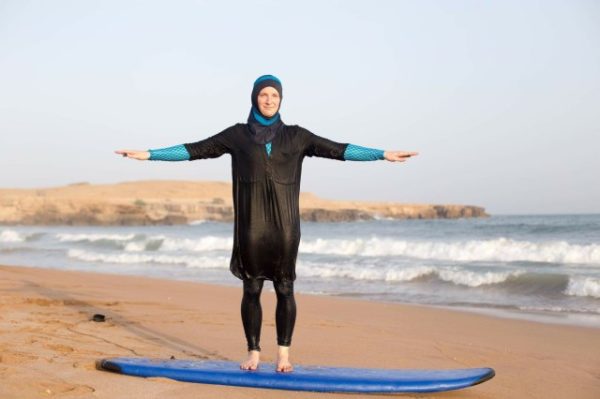
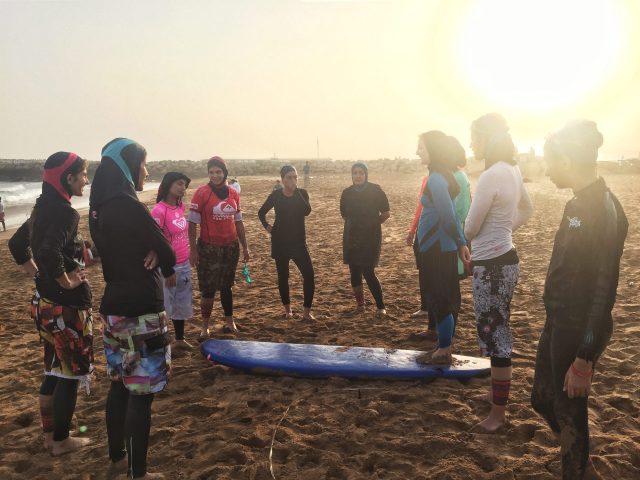
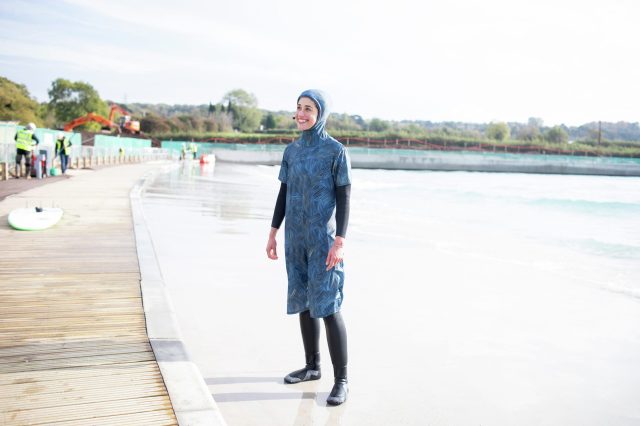
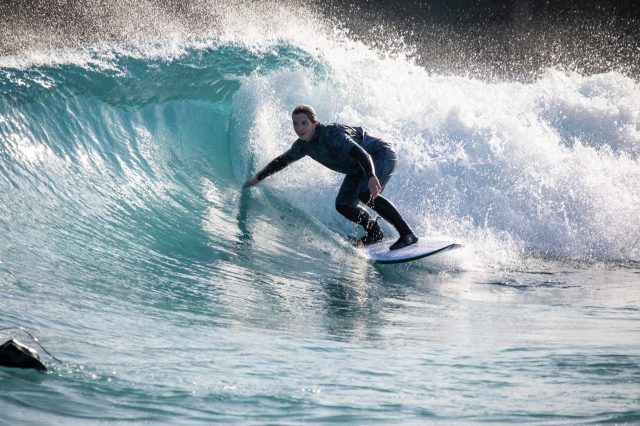
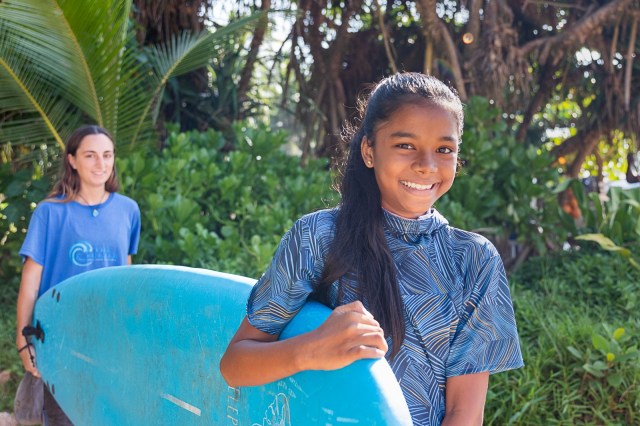
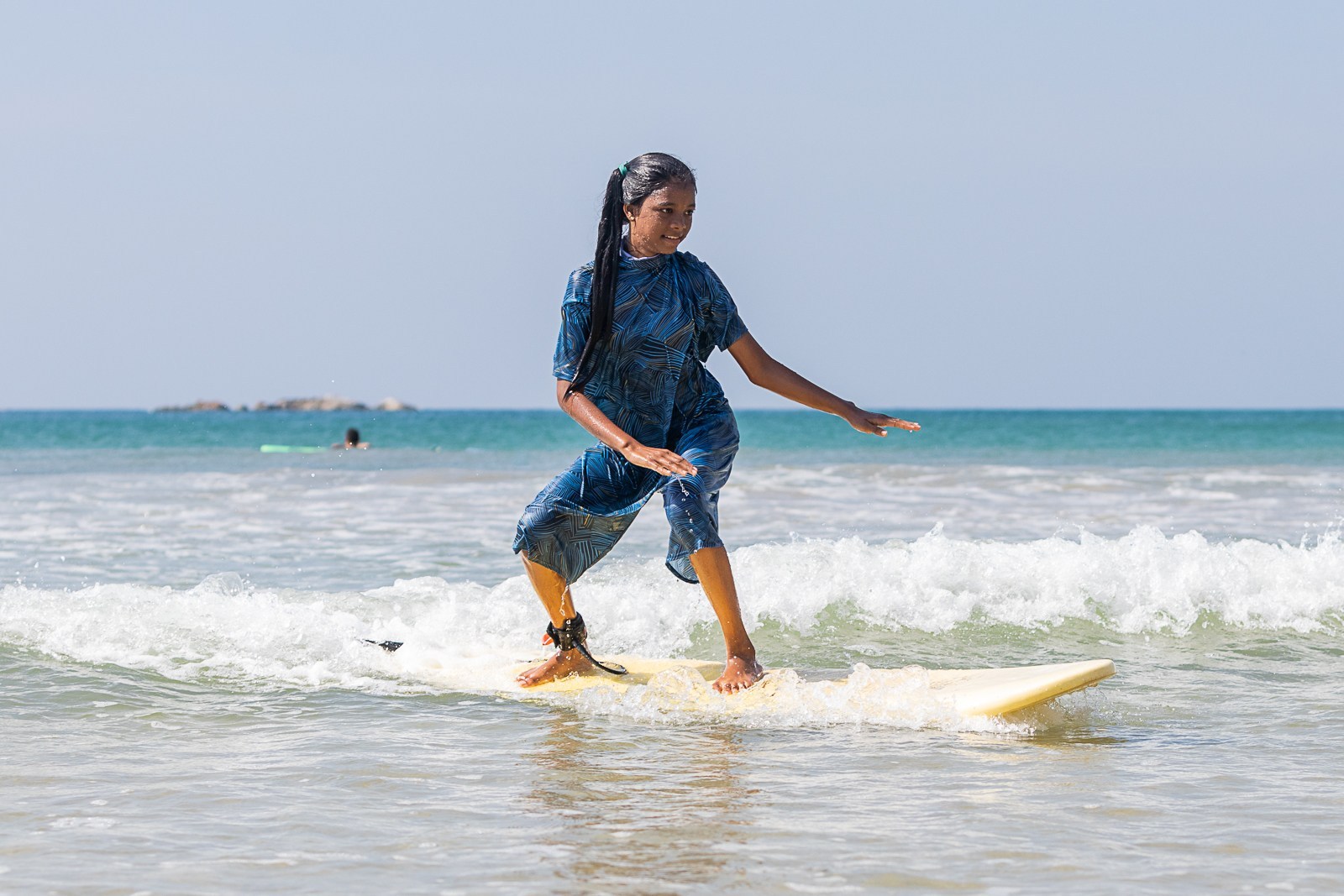




Recent Comments